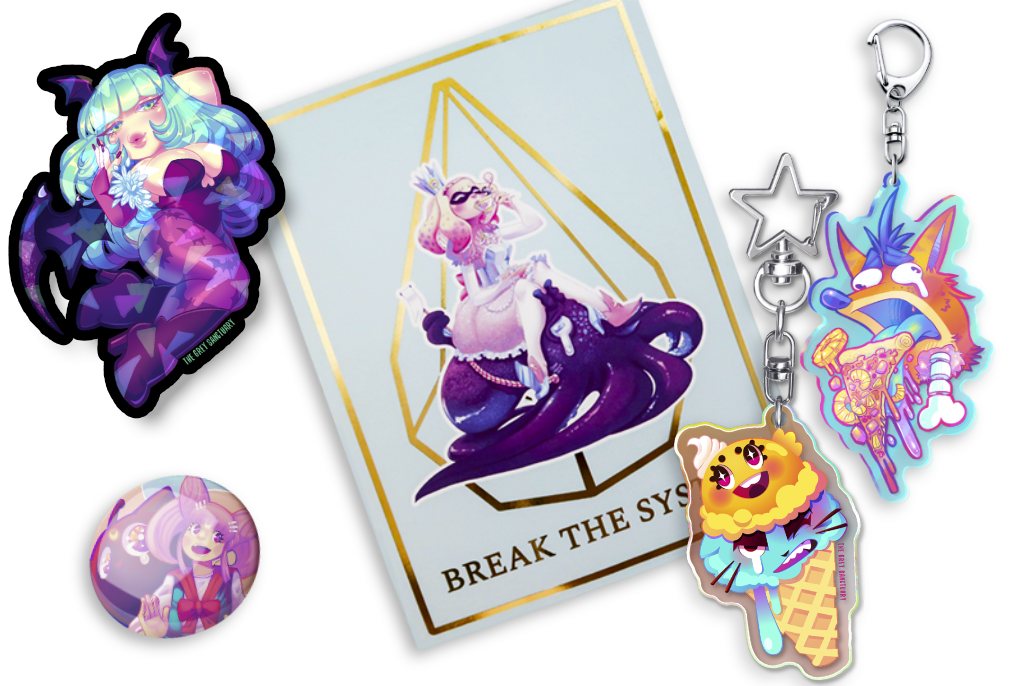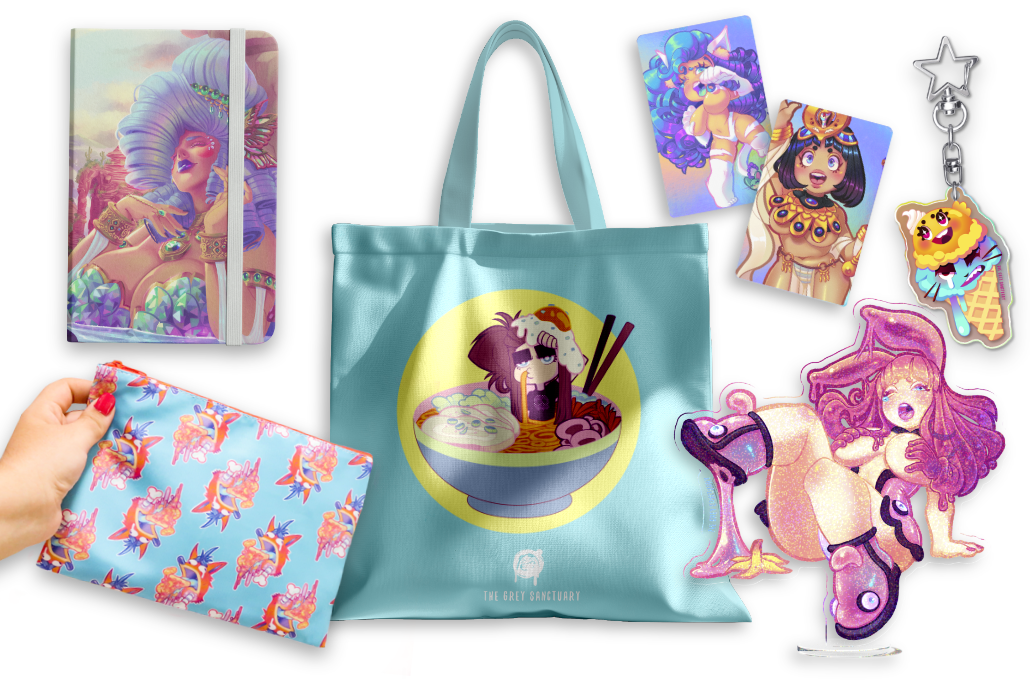

Little Cathedral Blog
Why Testing Paper Stock Is Vital?
Experimenting with paper’s finishes, textures, material durability, high quality, and color calibration are essential steps for producing your merchandise. Not all people use the same methods or similar materials. The only way to acquire successful results is by experimenting and fucking things up with paper stock.

The Types of Paper
There are many types of papers, with different finishes, thickness, texture, whiteness, and so forth. And at times, these alternatives might make us feel overwhelmed with all the possible answers and combinations. The best way to tackle the situation is by understanding how paper works. If you like to read more, you can take a look at my research and documentation of this particular journey in What To Look For In A Paper and Catprint Sample Kit!
The 50/50 Situation Scope
Sometimes we aren’t sure what is convenient for us anymore. We are torn with all the possibilities, yet we don’t know where to start. Sometimes we are better off letting a printing industry take care of our artwork, but suddenly the “what ifs” start bombarding our minds:
- What if the paper doesn’t feel right?
- What if the colors or the quality aren’t right?
- Why do my images look different on this paper vs. this paper?
- What if something goes wrong, and they deliver a faulty product?
- What if there’s not enough money to do it with a printing manufacturer?
- What if I’m running against the clock and the shipping date doesn’t benefit?
- Why am I not getting paid enough in the marketplace of this printing company?

Depending on the Printing Companies
Luckily, I’m here to guide you a little with my knowledge. At the end of the day, we don’t have 100% control of the situation when we depend on someone else to do our job. We can only respond and take action when we have our machines and tools accessible. When depending on companies to print our work, there could be many potential risks. We must see this as a 50/50 situation for both sides.
Depending on the Manufacturer
In the early stage, we design our pieces, measure the desirable sizes, and deliver them to the company in the final and correct formats that they ask us for. A CMYK and either PDF, PNG, or JPEG format with a scale of 2500px or higher. The second part is that the company will do the required service on the chosen paper, and use their printing devices with their settings (marks, bleed, slug…). They might tweak the designs upon your request, but ultimately the final product is what they can produce, not what you see entirely on your computer screen (CMYK is for printing while RGB is for virtual display and both formats can affect your color quality).
This also means they might send you soft-proofing (examining the piece virtually) and/or hard-proofing (examining the piece physically), which can help you make sure everything looks correct before proceeding to production. You can check out my review of Catprint’s Foil Prints and the challenges I had to go through.
Most of the time, companies do care for their clients and will do their best to help them and deliver the products the clients desire. Make sure to plan, ask whenever an issue is presented, and read the company’s rules and policies before proceeding to make an order. I believe some manufacturers don’t replace damaged goods by their end (ex. prints) if they are in a rush production and the quantities are lower in the order. This is a policy I’ve seen on rare occasions and is legit…

Depending on Marketplace Printing Companies
There are some companies like Redbubble and Society6 where not only you can make an order, but also sell your pieces, and best of all, they manage the whole process for you. This means that if your clients face issues with damaged goods, missing packages, or delayed shipments, they must get in contact with the company, not you. But there is a catch. You might earn a small percentage of the sale. Sounds logical (depending on the circumstances), since they are doing everything except designing. Also, some of these companies may use your work for promotional purposes when you abide by their ToS and upload your work on their system.
I once made an order to Redbubble for a few stickers and 3 times that order never came home, also I bought once from Society6 a couple of stickers too, and they came pixelated and grainy. I was furious, how does a big company have the audacity to deliver me poor-quality 2.5″ stickers for $6 each? Never again.
This might be a great alternative if you are always busy with work and don’t have the time to make your production. However, you’ll also have to push up your sales and promotions unless you pay the company to do it for you. For example, Storenvy will give you shouts, promote your products on all their social media pages, and put you in the spotlight as the “Feature Artist” if you pay. Overall, you’ll have to decide if this is the best route for you…

Making The Prints By Yourself
Assuming full responsibility for making your products requires a lot of attention and dedication. Making your prints doesn’t mean you’ll be taking care of your piece’s compositions, color calibrations, and ink errors. You’ll also have to clean up your machines, repair them, and replace their parts.
Having errors or damaged pieces also means depletion of materials and delayed production. There were 2 instances, the first one I accidentally cleaned up the wrong way the headpiece of the printer and damaged the electric chip, thus buying a spare part from China for $50. The last one was an internal spring that broke when the printer was unclogging itself, making an important part move erratically. It exploded (yes, it was a small pop) with a distinctive smell and smoke. The printer became inoperable after that last issue.
This also means you’ll have to push your sales and promotions, attend to any issue your client faces, and invest in equipment and hardware. It may seem like all the money will go into your pocket, but in reality, you’ll have a portion for yourself and the rest will be either for investment or savings.
How I Began My Journey With Papers?
So here are a few tips I can show you on how I started printing my artwork, from using the usual (bad) commercial stores like Office Depot, printing on a local print company, using an online marketplace from shops like Redbubble, and finally buying my own machines.
- Be sure that the paper is compatible with your printer (inkjet vs. laser).
- Always make sure to Soft-Proofing or hard-proofing before production.
- Remember to check for brightness, type of paper, weight, and thickness.
- Tweak the setting’s software to match a precise result from screen to print.
- To test ink efficiently, divide a single piece of paper into 4 different pictures.
- Ask help from someone who knows about paper stock, or visit local businesses.
- My evolution was from Bright White 20lb (Normal Paper), Matte 100lb to Luster.
- Or print the same artwork 4 times on each paper but with different color settings.
- You can begin in a local printing store to see some paper samples and test around.
- Research your favorite artist’s blog or ask them about their machines, I found mine thanks to Barachan.
- Most of the time printers will make a slight crop of your artwork (whether an abrupt movement when printing, or misplaced paper on the sheet tray), so make sure of the appropriate bleeds and mark crops.
Thank You For Reading!
If you like my work and documentation and wish to see more, please consider contributing to my growth and hard work with more exploration, investment, and website maintenance.












Leave a Reply